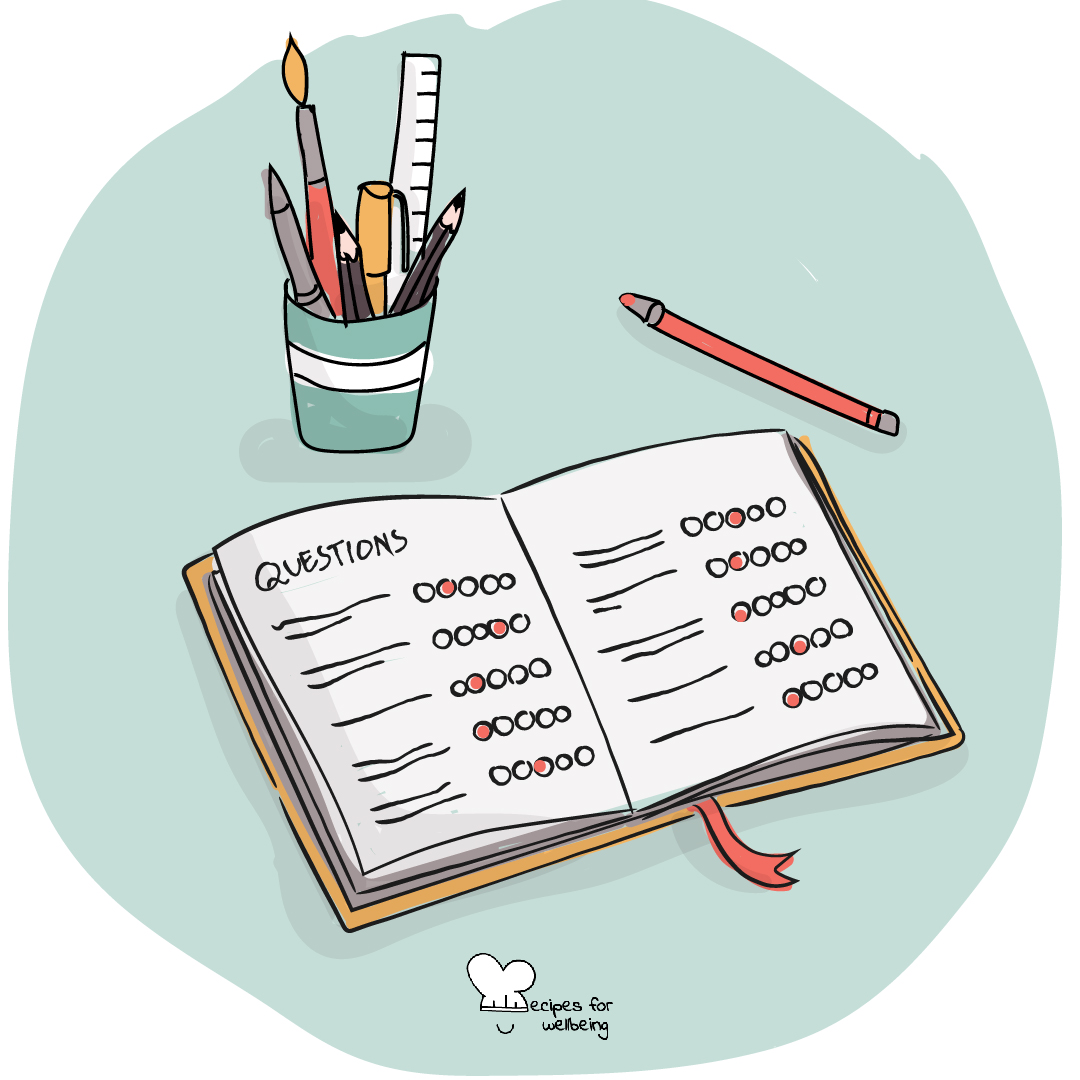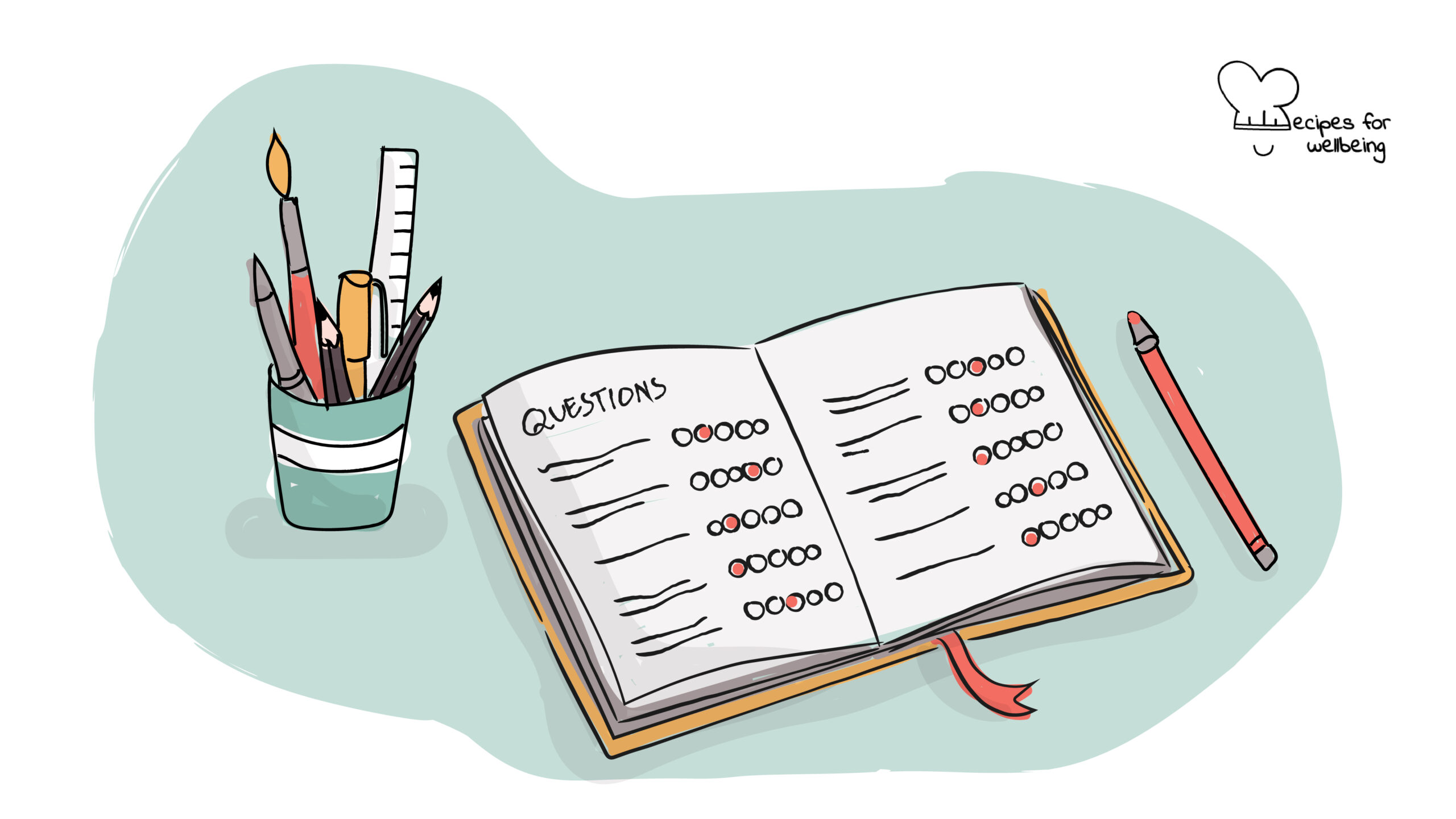
Burnout and wellbeing scale
Burnout is nature’s way of telling you, you’ve been going through the motions your soul has departed; you’re a zombie, a member of the walking dead, a sleepwalker. False optimism is like administering stimulants to an exhausted nervous system. ―Sam Keen
👥 Serves: 1 person
🎚 Difficulty: Easy
⏳ Total time: 15 minutes
🥣 Ingredients: 1 notebook (or sheet of paper), 1 pen
💪 Nutritional values: Awareness, Perspective, Consciousness, Self-Care, Respite

Burnout and wellbeing scale
📝 Description
A questionnaire to assess your level of burnout and wellbeing.
How can you recognise the symptoms of burnout before, well, burning out? Katrina Shields, in “In the tiger’s mouth: An empowerment guide for social action” offers a straightforward questionnaire to assess your level of burnout and wellbeing and identify where change might be needed. Once you complete the questionnaire, we also encourage you to check out our wellbeing recipes “6 causes of burnout” and “The wheel of burnout” which move beyond symptoms to identify the conditions and root causes of burnout.
👣 Steps
Step 1 – Reflecting (5’)
Reflect on the past three months and answer the following questions about how you have felt, rating them from 0 to 5.
Rating:
- 0 = Never
- 1 = Almost never
- 2 = Rarely, but sometimes
- 3 = Sometimes, more regularly
- 4 = Often
- 5 = Always
Questions
- Do you feel tired in a way that sleep does not relieve?
- Do you feel more pessimistic, disillusioned, or cynical about things that before you felt more positive about?
- Do you feel a sadness or emptiness inside?
- Do you have the physical symptoms of stress, e.g. insomnia, chronic body pain, headaches, or overwhelming feeling of pressure?
- Do you forget information or appointments or confuse memories?
- How frequently are you irritable, or emotional, or impatient?
- How frequently do you become sick?
- Do you feel like isolating yourself from friends, family, and colleagues?
- How frequently do you change pleasure plans, e.g. seeing friends, relaxing, to do work?
- How frequently do you feel dissatisfied or burdened by your work?
Step 2 – Assessing (5’)
Add up the points to find out your position in the burnout and wellbeing scale
Assessment:
- 0–15 = You seem to be doing well.
- 16–25 = Be careful, some attention and care is needed to maintain a strong sense of wellbeing.
- 26–35 = Be very careful, now is the time to change some things in your life, e.g. routines, attitudes, behaviours. You may be nearing burnout.
- 36–50 = Wow, now is the time to re-organise your life for greater wellbeing!
Step 3 – Further reflection and action (5’)
Reflect on other symptoms or habits that may indicate you are not doing as well as you could. Talk with others to find support and a healthy way forward.

